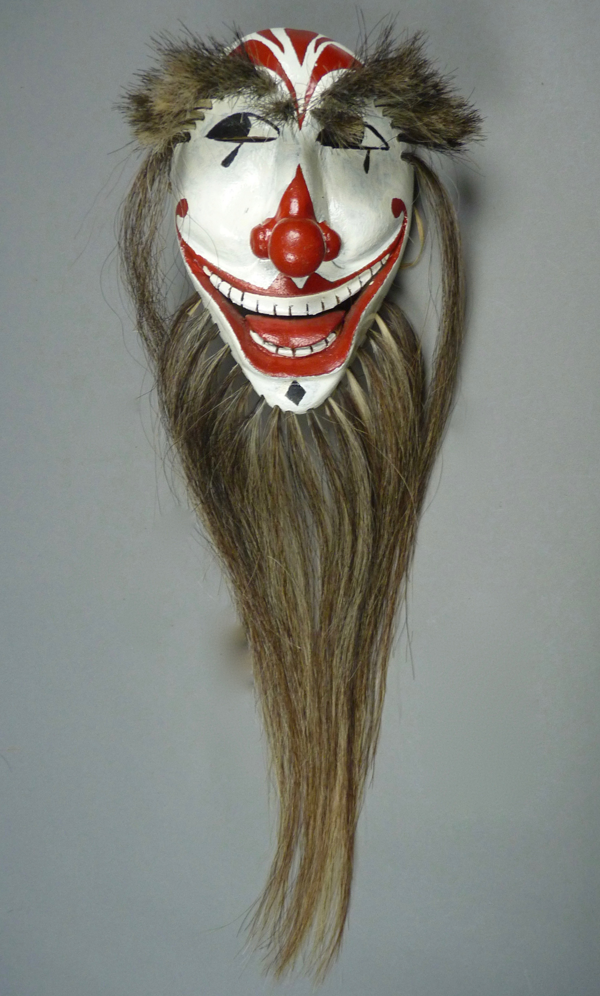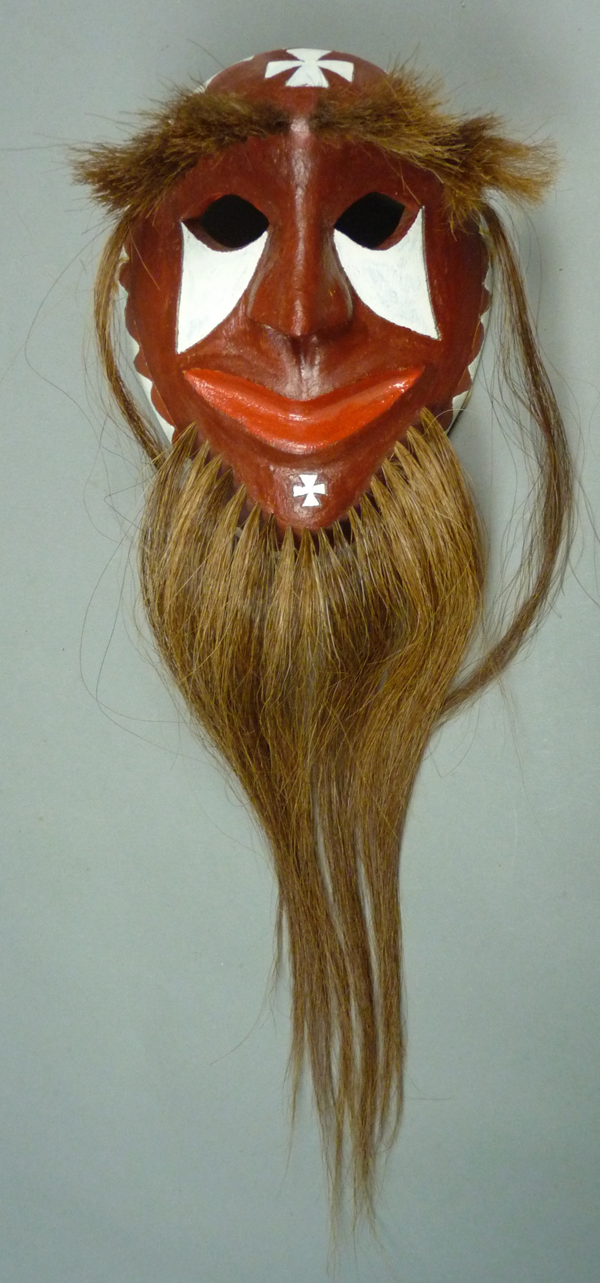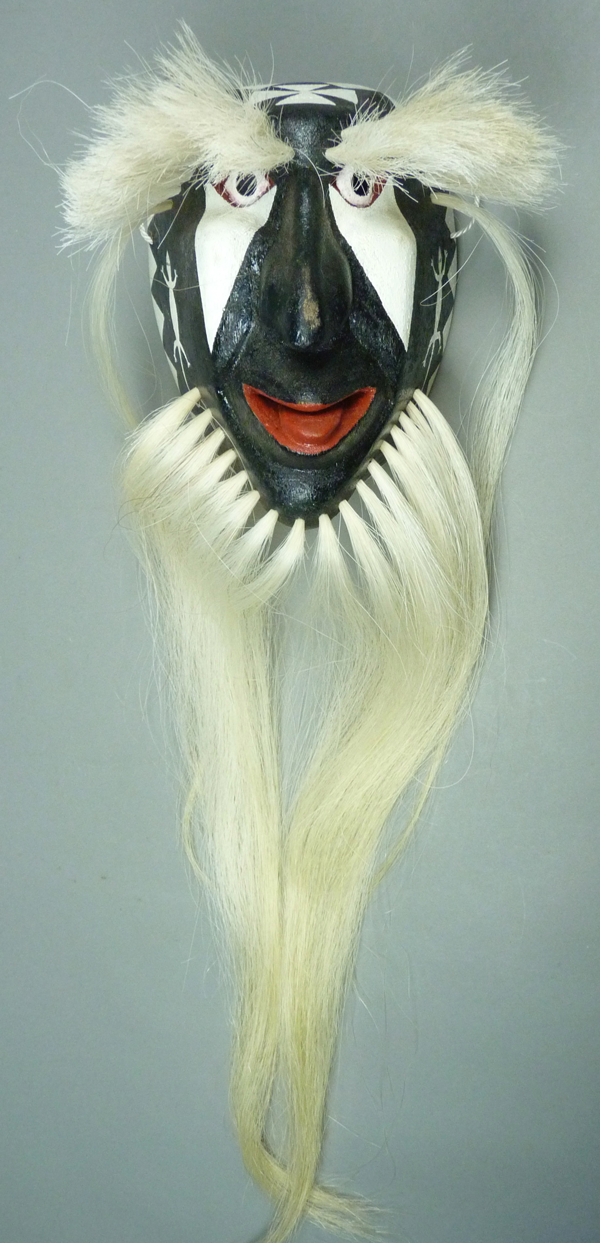I bought my first Goat Pascola mask by Crisencio from the Morning Star Traders gallery (Tucson) in 2006. It is magnificent.
Crisencio Molina Maldonado: Payaso Pascola Masks
I had purchased my first Payaso (clown) mask by Crisencio in 2006, from the Morning Star Traders gallery in Tucson, Arizona. Since then I have bought six more. These clowns will be the focus of today’s post. Here is the one from 2006. Isn’t this a wonderful mask!
Crisencio Molina Maldonado 3
Today I would like to begin with a few comments about my decision to collect all of these masks, even though most of them were new and undanced at the time of collection. In March of 1989 I examined the Yaqui and Mayo Pascola mask collections at the Heard Museum, in Phoenix Arizona. A few were very old and worn while others seemed not only new and unused, but also novel in design. I was allowed to take photos of these masks for my personal study, and over the years I would occasionally look them over. With experience and the passage of time, I became increasingly aware that these masks provided a priceless record of the arts and culture of these Peoples. On the one hand, the masks reflected aspects that were constantly changing and to some extent these changes seemed to reflect a quest for novelty. Yet to an educated eye, after my long study of Yaqui culture, these masks also revealed the persistence and continuity of this culture. New and undanced masks appeared to be such low-hanging fruit, inexpensive and artistically “sweet,” so I embraced this opportunity.
This week we will examine additional human faced masks by Crisencio Molina Maldonado that have have faces of red or brown color, rather than the more traditional black background color. Maybe these represent Indian faces?
I purchased the first three of these in 2006, from the Morning Star Traders™ gallery in Tucson, Arizona. This one appears to be the appropriate size for a child.
Crisencio Molina Maldonado 2
This week we will examine some more human faced masks by Crisencio Molina Maldonado. I will start with one that resembles the child’s mask at the end of last week’s post. I consider this mask, which Tom Kolaz purchased from the artist for me in 2010, to be a masterpiece.
This mask has the brow hair divided into two bundles, while Crisencio usually makes a continuous brow that spans both eyes (a unibrow).




